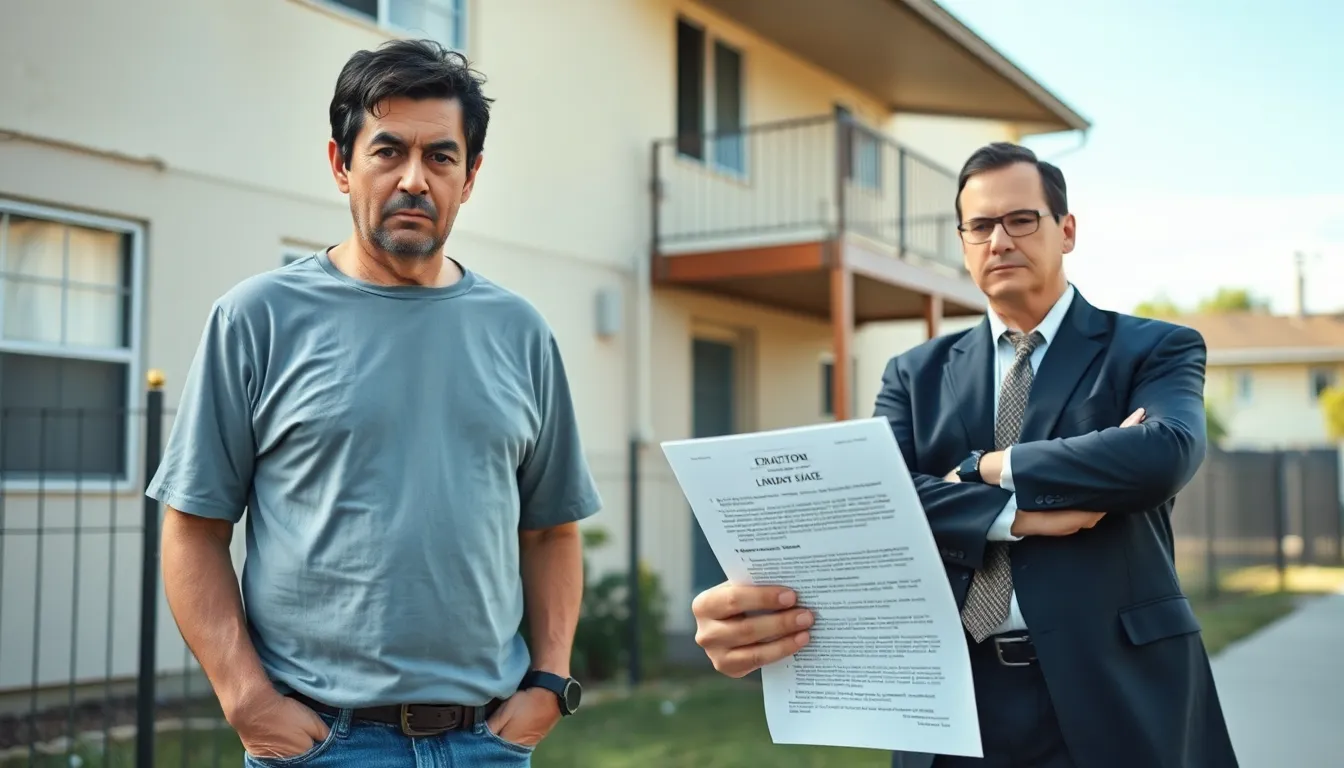Navigating the world of tenant notice requirements can feel like trying to decipher hieroglyphics while juggling flaming torches. But fear not; understanding these legal must-haves is crucial for both landlords and tenants. Whether you’re a landlord itching to reclaim your property or a tenant preparing to move, knowing the ins and outs of notice requirements can save everyone a heap of trouble—and maybe even a few awkward conversations.
Table of Contents
ToggleOverview of Tenant Notice Requirements
Tenant notice requirements vary significantly across different jurisdictions. Various laws outline specific timeframes for landlords to notify tenants of lease terminations, non-renewals, and rent increases. Each state mandates differing notice periods, which can range from 24 hours to 90 days, depending on the circumstances.
Local ordinances often influence notice requirements, particularly in urban areas. Certain cities implement stricter regulations to protect tenants, ensuring they receive sufficient notice of impending actions. Landlords must consult state statutes and local regulations to confirm compliance in their areas.
In addition to the timing, the method of delivering notices plays a crucial role. Common delivery methods include personal delivery, posting on the premises, and sending via certified mail. The method chosen impacts the legal validity of the notice and should align with state laws.
Understanding the specific content required in notices is essential. Notices typically include details like the reason for the action, the effective date, and any pertinent information regarding tenant rights. Clear and concise communication minimizes potential disputes and uncertainties for both parties.
Compliance with tenant notice requirements protects landlords’ rights while ensuring tenants can plan accordingly. Both parties benefit from understanding their respective responsibilities, as this knowledge fosters a smoother rental experience. Tracking timelines and maintaining clear communication helps prevent misunderstandings and legal complications down the line.
Types of Notices
Different types of notices serve specific purposes in the landlord-tenant relationship. Understanding these can help both parties navigate their rights and obligations effectively.
Rent Increase Notices
Rent increase notices inform tenants about proposed changes to their rental payments. Tenants typically receive these notices before the increase takes effect, often ranging from 30 to 90 days based on local regulations. The notice must detail the new rent amount and the effective date of the change. Clarity is essential, as unclear notices may lead to disputes. Some jurisdictions require landlords to justify the increase, particularly in rent-controlled areas. Compliance with state requirements ensures that tenants understand their financial obligations.
Termination Notices
Termination notices communicate a landlord’s intent to end a lease agreement. These notices specify the reason for termination, such as lease violations or non-renewal, and provide tenants with a clear deadline to vacate. Notice periods can vary, often requiring 30, 60, or 90 days depending on the jurisdiction. The content should include relevant details, ensuring tenants understand their rights and responsibilities during the process. Properly executing these notices minimizes misunderstandings and helps ensure a smoother transition for both sides.
Legal Considerations
Tenant notice requirements depend heavily on legal frameworks that vary by jurisdiction. Local laws dictate specific regulations regarding notification periods, which range widely. For instance, some states require a 24-hour notice, while others may extend to 90 days. Always review the rules specific to your state to ensure compliance. Not only do these regulations influence how landlords communicate, but they also affect the rights of tenants during the moving process.
State-Specific Regulations
State regulations play a crucial role in determining notice requirements. Each state outlines its own guidelines regarding notice periods for lease terminations, rent adjustments, and evictions. These guidelines often reflect local housing markets and tenant protection policies. For example, states like California have stricter laws governing rent increases and eviction notices compared to more lenient states. Understanding these regulations helps both landlords and tenants navigate their rights effectively.
Federal Laws Impacting Notices
Federal laws also impact tenant notice requirements, albeit to a lesser extent. The Fair Housing Act prohibits discrimination in housing practices, including rental notices. Landlords must ensure that their notices do not violate tenants’ rights under this act. Additionally, the Protecting Tenants at Foreclosure Act grants specific rights to tenants facing eviction in foreclosure situations. Familiarizing oneself with these federal laws enhances tenant awareness and encourages compliance among landlords.
Best Practices for Tenants
Understanding tenant rights and communicating effectively contribute significantly to a smooth rental experience. Awareness empowers tenants to navigate the complexities of lease agreements confidently.
Understanding Your Rights
Tenants must recognize their rights under local laws. Each jurisdiction has specific regulations regarding notice periods for rent increases and lease terminations. Familiarizing oneself with these requirements helps prevent unnecessary conflicts. For instance, in California, notice periods can range from 30 to 90 days, depending on the situation. Accessing local housing authority resources or legal aid can provide valuable insights into tenant rights. Knowing what landlords can and cannot do ensures tenants are prepared when issues arise.
Documenting Communications
Documentation plays a crucial role in tenant-landlord relationships. Keeping records of all communications helps establish a clear timeline of interactions. This includes saving emails, letters, and texts related to notices or agreements. If disputes arise, having a paper trail can support a tenant’s claims. Sending important communications via certified mail adds another layer of validation, creating proof of delivery. Maintaining organized records protects tenants’ interests and enhances their ability to advocate for themselves.
Best Practices for Landlords
Landlords must prioritize effective communication through clear, concise notices. Following legal requirements enhances professionalism.
Creating Clear Notices
Clarity in notice content is paramount. Each notice should specify the reason for the action, the new rent amount, or the lease end date. Detailed explanations minimize confusion and lay a foundation for respectful dialogue. Including necessary tenant rights information empowers individuals and fosters transparency. Examples of each type of notice can serve as templates, guiding landlords in their communication. Notices lacking clarity can lead to disputes, complicating relationships and potentially causing delays.
Timely Distribution of Notices
Distributing notices on time is essential for compliance. Each type of notice has specific legal timeframes, often ranging from 24 hours to 90 days. Landlords must calculate these periods accurately to avoid legal repercussions. For instance, sending a rent increase notice at least 30 days in advance ensures compliance and gives tenants adequate time to adjust. Employing methods such as certified mail verifies receipt, adding an extra layer of security. Prioritizing timely distribution contributes to smoother transitions and fosters goodwill between landlords and tenants.
Conclusion
Navigating tenant notice requirements is essential for a harmonious landlord-tenant relationship. Both parties benefit from understanding their rights and responsibilities. By adhering to local laws and delivering clear, timely notices, landlords can protect their interests while ensuring tenants have the necessary information to make informed decisions.
Effective communication is key to minimizing misunderstandings and fostering a respectful dialogue. Tenants who are proactive in documenting communications and familiarizing themselves with their rights can advocate for themselves more effectively. Ultimately, prioritizing clarity and compliance in notice requirements leads to smoother transitions and a more positive rental experience for everyone involved.









